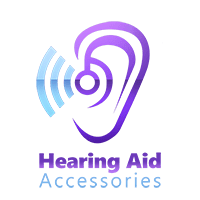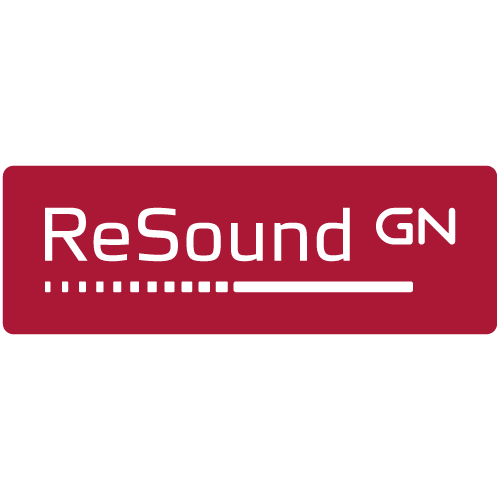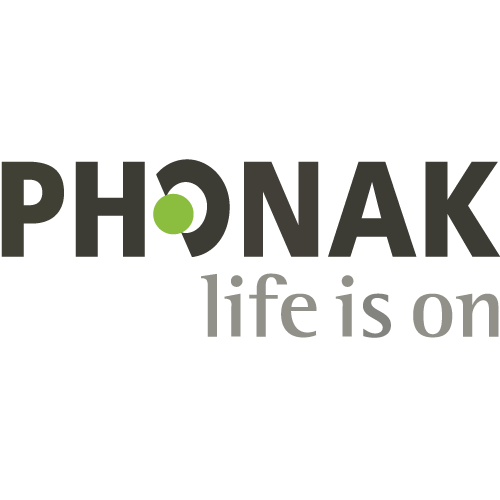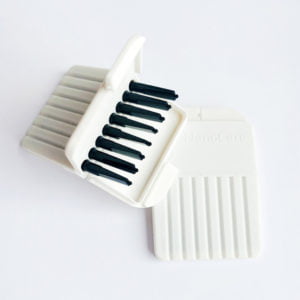One of the most important components of a hearing aid is the receiver, which plays a pivotal role in delivering clear and amplified sound to the ear. Understanding the different types of hearing aid receivers and their functions can significantly enhance your hearing experience.
Read on to find out all you need to know about hearing aid receivers, from their basic function to the various types available on the market. We’ll also give you some tips on choosing the right receiver, maintaining it, and the specific options we offer on the Hearing Aid Accessories online shop.
In This Article:
What Is a Hearing Aid Receiver?
A hearing aid receiver, or the speaker, is an essential component that delivers sound from the hearing aid into your ear. For in-canal hearing aids, the receiver sits inside your ear canal and connects to the main hearing aid by an electronic wire. On the other hand, in external hearing aid receivers, the core components of the aid are housed behind the ear, while the receiver is mounted on soft domes, or a custom mould inside the ear canal. This configuration saves space in the main housing, allowing for a more compact behind-the-ear unit.
Types of Hearing Aid Receivers
Hearing aid receivers come in various types, each suitable for different hearing needs and preferences. Generally, they fall into one of two categories: in-ear canal receivers and behind-the-ear (BTE) receivers. Within these categories, there are several subtypes designed to cater to varying degrees of hearing loss:
1) In-Canal Receivers
- Receiver-in-Canal (RIC): RIC receivers are small and discreet. They fit inside the ear canal and connect to a behind-the-ear unit by a thin wire. Lightweight, they offer good sound quality. Furthermore, they are suitable for mild to moderate hearing loss.
- Receiver-in-the-Ear (RITE): RITE receivers fit within the outer ear, connected to a behind-the-ear unit. They offer similar benefits to RIC receivers. Moreover, they are comfortable and discreet, providing a natural listening experience. Ideal for mild to moderate hearing loss.
2) Behind-the-Ear Receivers
- Standard BTE Receivers: The standard BTE hearing aid houses all components, including the receiver, behind the ear. Sound travels through a tube to an earmold in the ear canal. These receivers are powerful, suitable for moderate to severe hearing loss. Additionally, they offer advanced features and long battery life.
- Mini BTE Receivers: Mini BTE devices are a smaller version of standard BTEs, offering a more discreet appearance while retaining similar functionality. Moreover, they combine benefits of BTE with a smaller, more comfortable design, suitable for mild to moderate hearing loss.
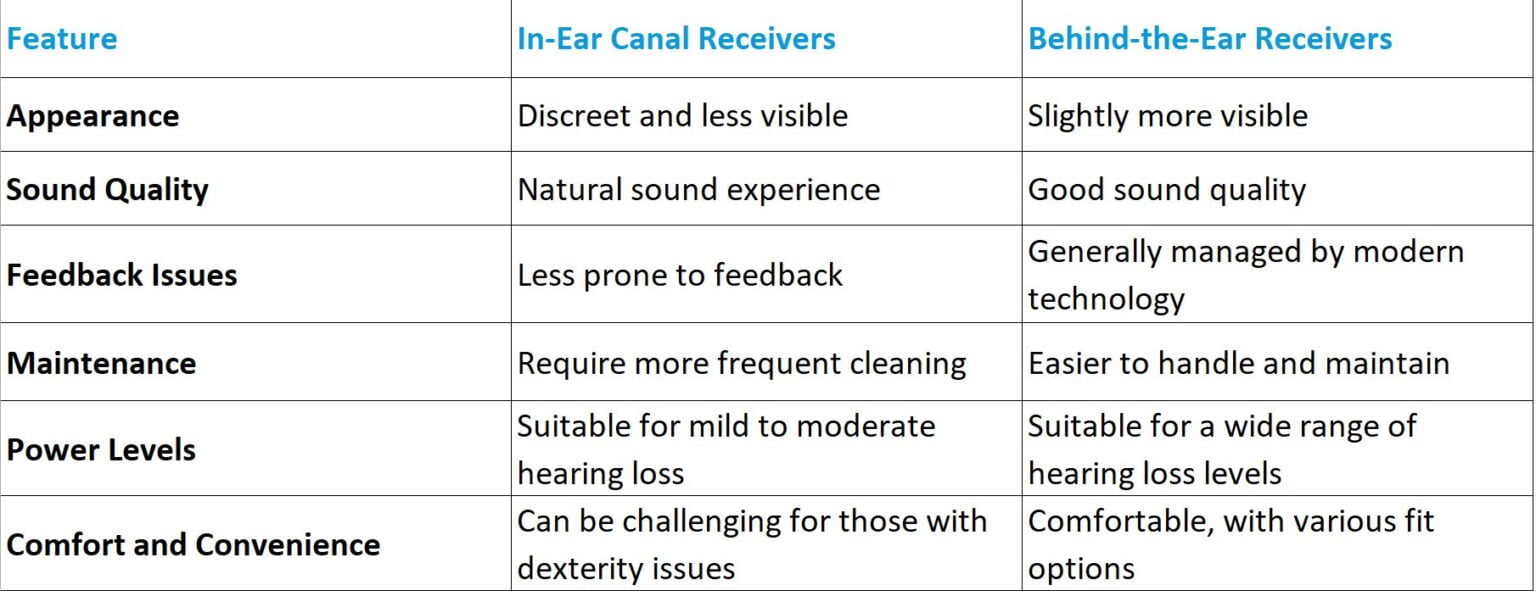
Additional Considerations
Hearing aid receivers also come in various sizes and power levels to accommodate different degrees of hearing loss. It’s essential to select the appropriate size and power level that matches your specific hearing needs. Furthermore, receivers are designed for either the right or left ear, so ensure you choose the correct one for your hearing aid configuration.
Understanding the different types of hearing aid receivers and their features can help you choose the best option for your specific hearing needs. Whether you prioritise discretion, comfort, or advanced functionality, there is a hearing aid receiver designed to meet your requirements.
How Hearing Aid Receivers Work
Hearing aid receivers are the crucial components responsible for converting electrical signals into audible sound. They work by taking the amplified electrical signals from the hearing aid’s processor and converting them into sound waves that can be heard by the user. This process involves several key steps:
1) Sound Processing
Electrical signals picked up from the hearing aid’s microphone are sent to the hearing aid’s processor, where they are amplified and processed to enhance clarity and reduce background noise.
2) Signal Transmission
The processed electrical signals are sent to the hearing aid’s processor, where they are amplified and processed to enhance clarity and reduce background noise.
3) Sound Conversion
The receiver converts these electrical signals back into sound waves. It does this by using a tiny diaphragm or membrane that vibrates in response to the electrical signals, creating soundwaves.
4) Sound Delivery
These sound waves are then directed into the ear canal, where they are perceived by the user as amplified sound.
The receiver’s ability to accurately convert and deliver sound is essential for the overall performance of the hearing aid. It ensures that sounds are clear, natural, and free from distortion.
Choosing the Right Hearing Aid Receiver
Selecting the right hearing aid receiver is crucial for optimising your hearing experience. Several factors need to be considered to ensure the receiver matches your specific needs and preferences. Here’s a guide to help you make an informed decision:
1) Factors to Consider When Choosing a Hearing Aid Receiver
- Hearing Loss Severity: Different receivers accommodate different levels of hearing loss. Ensure that the receiver you choose is appropriate for the degree of your loss, whether mild, moderate, or severe.
- Comfort and Fit: Comfort is essential for regular use. Consider the size and shape of the receiver and how it fits into your ear. Custom-fit options may provide better comfort and performance.
- Discretion: If you prefer a more discreet hearing aid, in-ear canal receivers might be the best choice due to their less visible design. Behind-the-ear receivers, while slightly more noticeable, are becoming increasingly compact.
- Compatibility: Ensure that the receiver is compatible with your hearing aid model. Not all receivers work with all hearing aids, so check the specifications carefully.
- Maintenance: Consider how easy it is to maintain and clean the receiver. Regular maintenance is essential for longevity and performance, so choose a receiver that fits your lifestyle in terms of upkeep.
2) Replacing Existing Hearing Aid Receivers
If you already have a hearing aid and need to replace the receiver, here are some steps to identify the correct one:
- Check Your Hearing Aid Model: Identify the make and model of your current hearing aid. This information is usually printed on the hearing aid itself or can be found in the user manual.
- Consult the Manufacturer’s Guide: Refer to the manufacturer’s guide or website for information on compatible receivers for your specific hearing aid model.
- Inspect Your Current Receiver: Look at your current receiver for any identifying marks or model numbers. This can help you find an exact match.
- Consult With Your Audiologist: Bring your current hearing aid receiver to your audiologist. They can help you identify the correct replacement and may have compatible receivers in stock.
- Consider Upgrading: If you feel like your hearing needs are changing, consult your audiologist about potential upgrades. Advances in technology may offer improved receivers that better meet your current hearing requirements and/or provide extra features.
Special Note on BTE Hearing Aids:
If you have chosen a Behind-the-Ear (BTE) hearing aid, it typically comes with the receiver sitting within the main body of the hearing aid. In this case, there is no need to choose a separate receiver, as the integrated receiver is designed to work optimally with the BTE model. However, if the receiver needs replacing, it is not a user-replaceable component. You should take the hearing aid to an audiologist or a hearing aid professional to help with that.
Maintenance and Care for Hearing Aid Receivers
Here are some guidelines to keep your hearing aid receivers in top condition:
1) Regular Cleaning
- Daily: Wipe the receiver and the hearing aid with a soft, dry cloth to remove any earwax, moisture, or debris.
- Weekly: Use a cleaning brush or a special hearing aid cleaning tool to gently clean the receiver and remove any built-up wax or dirt. Avoid using sharp objects that could damage the receiver.
- Deep Cleaning: Periodically, your hearing aid may require a more thorough cleaning by a professional. Consult your audiologist for advice on how often this should be done.
2) Avoid Moisture
Keep your hearing aids and receivers dry. Moisture can damage the electronic components. Remove them before showering, swimming, or using hair products. Also, make sure to use a hearing aid dehumidifier or a drying box overnight to keep your hearing aids moisture-free.
How Often Should Hearing Aid Receivers Be Changed and Why?
Hearing aid receivers typically need to be changed every six to twelve months. The frequency of replacement depends on several factors, including the type of receiver, how often the hearing aid is used, and the user’s earwax production. Regular replacement is important because:
- Wear and Tear: Over time, the receiver can become clogged with earwax and debris, which can affect sound quality and performance.
- Component Degradation: The electronic components inside the receiver can degrade with use, leading to reduced sound clarity and volume.
- Hygiene: Regular replacement helps maintain good hygiene, reducing the risk of ear infections and other ear health issues.
Our Range of Hearing Aid Receivers: Shop Today!
At Hearing Aid Accessories, we pride ourselves on offering a wide selection of high-quality hearing aid receivers from some of the most trusted and reputable brands in the industry. Whether you are looking to replace an existing receiver or upgrade to a more advanced model, we have the right product to meet your needs.
We offer receivers from the following leading brands:
- Phonak: Known for their innovative technology and exceptional sound quality, Phonak receivers are designed to provide a seamless hearing experience.
- Widex: Widex receivers are renowned for their natural sound and advanced features that cater to various hearing needs.
- Oticon: Oticon receivers offer high performance and reliability, ensuring clear and comfortable hearing in any environment.
- ReSound: ReSound receivers combine cutting-edge technology with user-friendly designs, making them a popular choice for many users.
- Signia: Signia receivers are designed to deliver superior sound clarity and are built to last, providing excellent value for your investment.
- Starkey: Starkey receivers are engineered for durability and performance, offering enhanced sound quality and comfort.
To browse our full range of hearing aid receivers and find the perfect fit for your hearing aid, click the button below.
